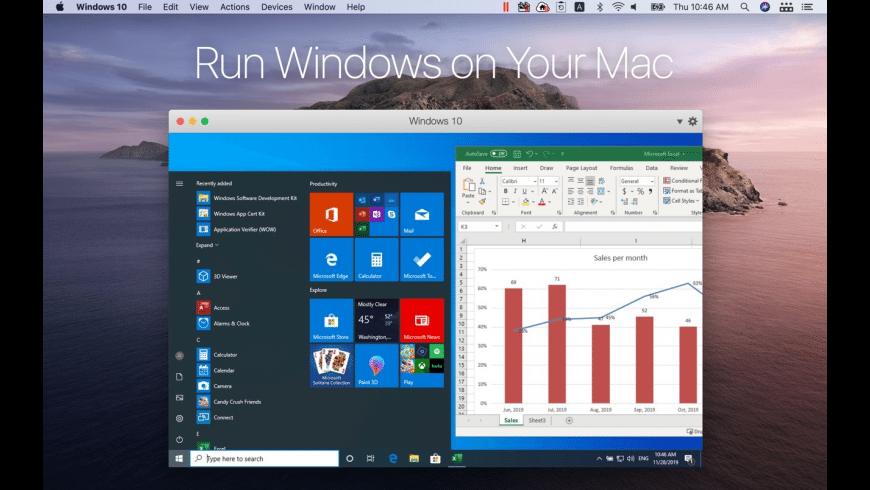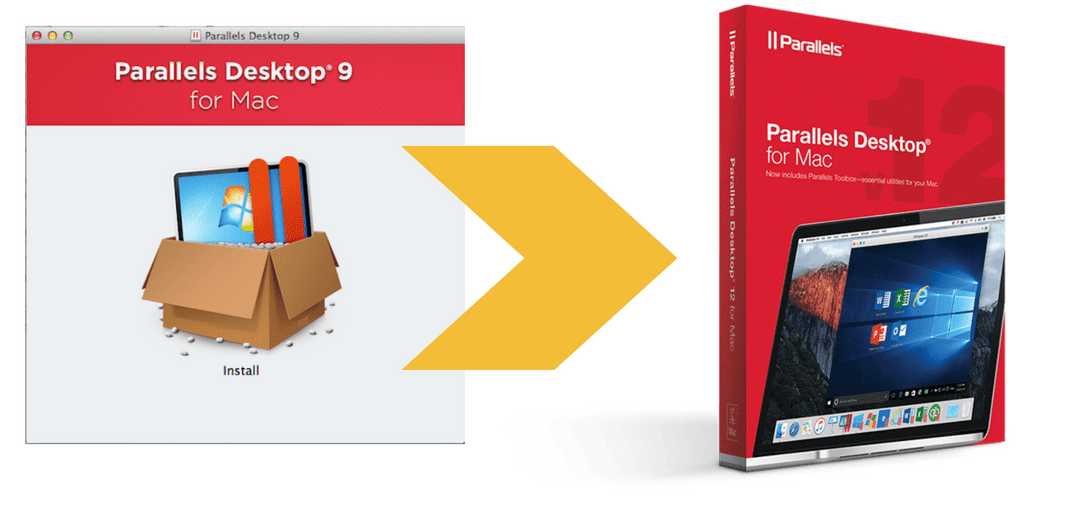Fall is around the corner, which means a new version of OS X is almost here. That also means a new version of Parallels — the software that lets you run Windows on a Mac — is almost here, too, and this time there's a big emphasis on speed.

With Parallels Desktop 10 installed on your Mac, you won't just be able to run Windows on a 'virtual machine' within your Mac, you'll be able to do it significantly faster then previous generations. Windows documents open 48% faster, and Office 2013 apps launch 50% faster, the company claims. At the same time, battery life is extended up to 30%, and the Windows 'machine' uses 10% less memory.

Parallels on Wednesday announced the release of Parallels Desktop 10 for Mac with built-in support for Apple's upcoming OS X 10.10 Yosemite, faster Windows app performance, better battery life.
- 1 Parallels Desktop 10 for Mac and Parallels Desktop 10 for Mac Enterprise Edition has experimental support for many of the features of OS X Yosemite Developer Preview, bringing them to Windows.
- Is a developer of desktop and server virtualization software. Released on June 15, 2006, it was the first software product to bring mainstream virtualization to Macintosh computers utilizing the Apple–Intel architecture (earlier software products ran PC software in an emulated environment). Its name initially was 'Parallels Workstation for Mac OS X', which.
The new version also further erases the line between OS X and Windows with a few new tricks: Windows apps are automatically added to the Mac's Launchpad, and you can even use the Windows 8.1 Start screen as the Launchpad. Parallels enables sharing from Windows apps to any of the user's Internet accounts on the Mac side. Even the Mac's little red balloon notifiers get Windows-friendly, appearing on the Microsoft Outlook icon.
As with previous versions of Parallels, all your Windows apps appear in your Mac's launcher, just with the red Parallels icon to show they're not native to the Mac.
Of course, Parallels Desktop 10 supports OS X Yosemite (scheduled for release 'in the fall,' according to Apple), and brings some of its features to Windows apps, including the ability to save to iCloud Drive, and share via iMessage.
The software supports older versions of OS X back to OS X 10.8 Mountain Lion. You can create more than one virtual machine, letting you run multiple versions of Windows and even Android on the same hardware — very handy for developers.
Parallels Desktop 10 will be available Aug. 26 for $79.99, but if you have the previous version, upgrading costs $49.99. The Student Edition is $39.99. Big, obvious caveat: if you don't already have Windows, you have to buy a Windows license, too, and that costs $119. At least this edition makes that easy for developers who can download 90-day trials of Windows virtual machines. There's also an enterprise edition that throws in a few extra features for device management.
Love running Windows on your Mac so much that you want to bring it to your iPad, too? Parallels also offers a way to access computers (real and virtual) from your tablet via an app called Parallels Access.
Correction: This article originally stated Parallels Desktop 10 allows you to buy a Windows license while creating a virtual machine. In fact, it only facilitates the download of a 90-day trial version.
Parallels Desktop For Mac Key
Parallels has a long history of smashing together competing operating systems to help platform-blending organizations move easily between OSes and get things done. The company will do it again with the newest Windows operating system (or service) Windows 10 and OS X Yosemite (yes, Yosemite), but this time with a twist.
Parallels Desktop 11 for Mac brings Cortana, Microsoft’s digital assistant to the OS X desktop. Obviously, the OS-virtualizing software is also bringing a bunch of other stuff in version 11 (is there any sadness that there will never be a Windows 11?).

See also: Apple OS X El Capitan preview: Better Spaces, transit maps and more
If you haven’t used Parallels software before, it performs the neat trick of putting a fully virtualized version of, now, Windows 10 on a Mac OS X Yosemite system (El Capitan support is in the “experimental” phase). This allows you to run a licensed version of the OS on a Mac and access all the apps that would normally run only in Windows. Bootcamp, by contrast, allows you to run Windows on a Mac, but in a completely separate environment.
It goes further, though, by blending Windows 10 elements into OS X in ways that make them seem almost like part of your Mac. For example, Cortana can pop up from the OS X dock when you say “Hey, Cortana.” You can use it in all the ways you normally use Cortana (news, weather, Web search) and to launch Mac apps. It also adds the new Windows Notification center to the Mac desktop — it sweeps in from the side of the screen, just like on Windows 10.
Parallels Desktop 11 also brings Mac features to the virtualized Windows system, like Quick Look, which you access via the space bar. And if your MacBook has a Force Touch-supporting touchpad, you can use that to quickly access word definitions in Microsoft Word for Windows.
You can also see all files on your Mac in Windows and, according to company representatives, transferring files between the OSes is easy. If you print a Windows file, you’ll have access to the full Mac print dialog box.
Parallels Desktop 16 For Mac
The company also promises that this will be the fastest Parallels ever with 50% faster boot and shut down times and a 20% speed bump for task management.

Parallels Desktop For Mac Crack
Parallels Desktop 11 for Mac, which is available Wednesday, will support new licensed Windows 10 installations and migrations from existing machines (which will basically ghost the whole system onto your Mac). Standalone Parallels Desktop 11 for the Mac costs $79.99. Upgrade pricing for those using versions 9 or 11 is $49.99. A Pro edition, which adds, for instance, integration with developer tools and cloud storage access, is $49.99 a year.
